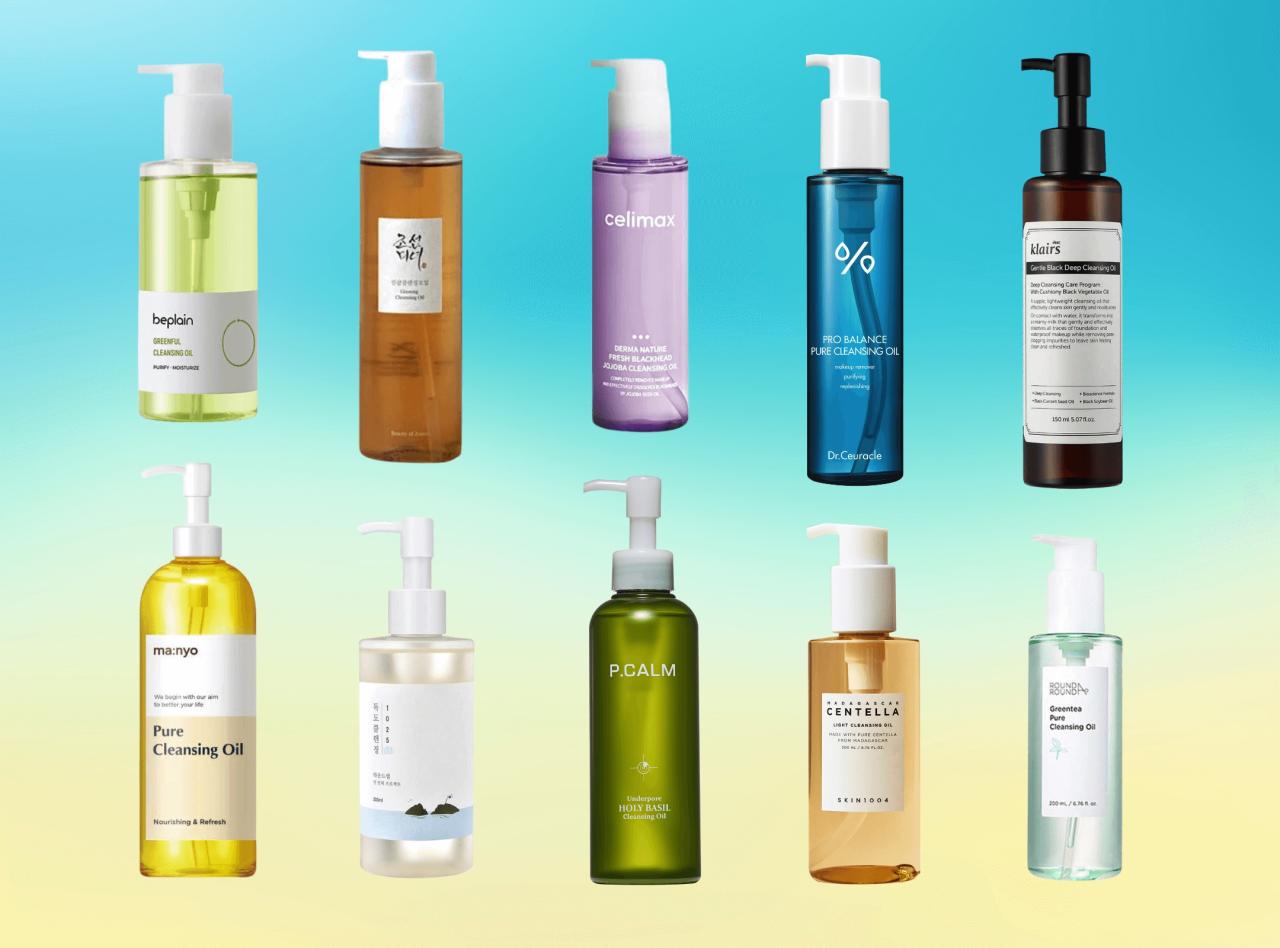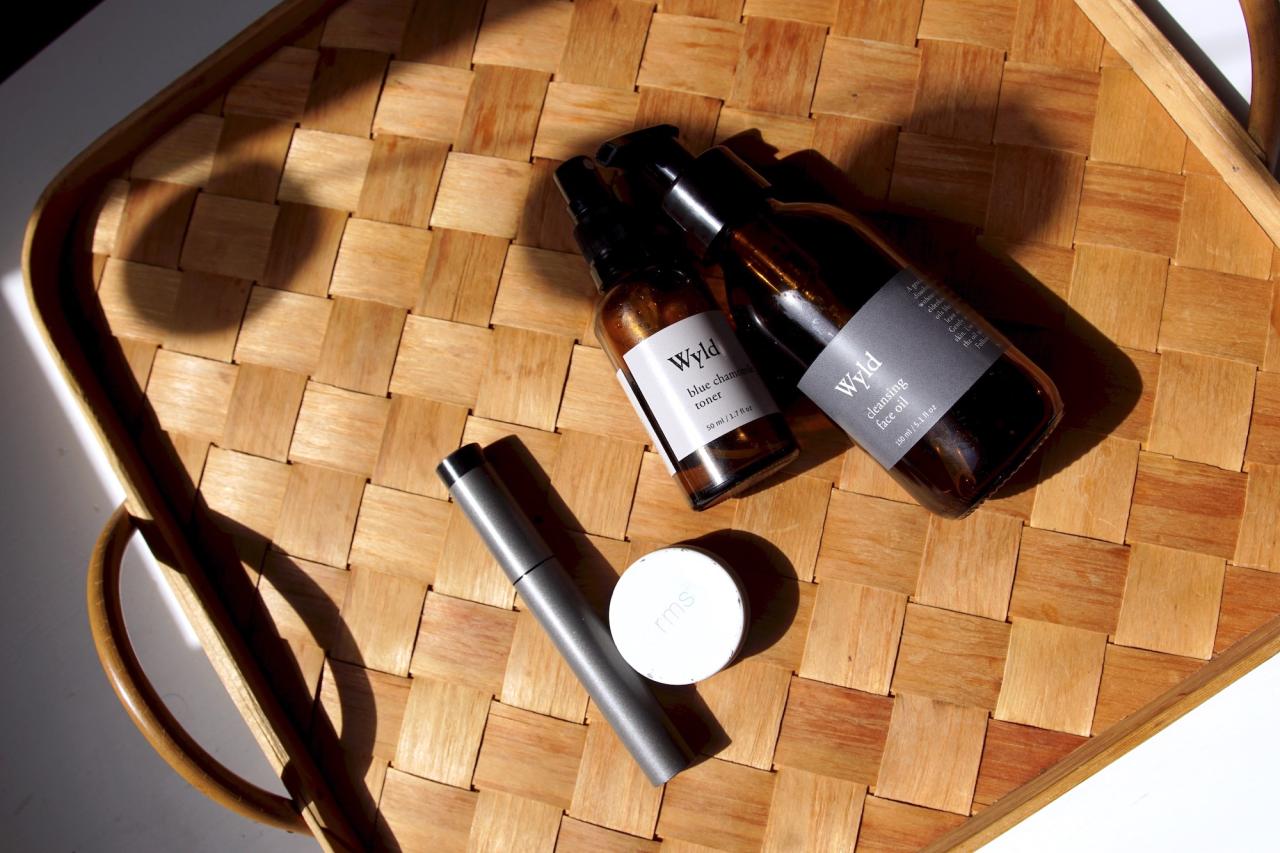Is cleansing oil suitable for all skin types and ages – Is cleansing oil suitable for all skin types and ages? That’s the million-dollar question, or perhaps the million-dollar
-glow*-question! We’re diving headfirst into the slick, satisfying world of cleansing oils, exploring whether this beauty trend is a universal panacea or a potential pore-clogging peril. Prepare for a journey through the science of sebum, the art of oil-based cleansing, and the delightful discovery of whether your skin will sing its praises or sound the alarm.
This exploration will cover the chemical composition of various cleansing oils, their interaction with different skin types (oily, dry, combination, sensitive – we’re naming names!), and how they fare against the aging process. We’ll compare cleansing oils to other methods, address specific skin concerns (acne, wrinkles, you name it!), and even offer expert tips on choosing and using cleansing oil effectively.
Buckle up, skincare aficionados – it’s going to be a smooth ride.
Understanding Cleansing Oils: A Deep Dive
Cleansing oils: the unlikely heroes of the skincare world. They’re slick, they’re oily, and yet, they somehow manage to leave your skin feeling squeaky clean. But how? Let’s delve into the science (and the fun) behind these magical potions.
Cleansing Oil Composition and Mechanisms
Typical cleansing oils are a blend of various oils, often including emollients like mineral oil or plant-based oils such as jojoba, argan, or olive oil. These oils work on the principle of “like dissolves like.” Makeup and sebum (your skin’s natural oil), being oily substances themselves, readily dissolve in the cleansing oil. The oil then gently lifts away dirt, debris, and makeup, leaving your skin feeling refreshed.
Comparison of Cleansing Oil Types
Mineral oil-based cleansing oils are often more affordable and readily available, but some find them too heavy. Plant-based oils, on the other hand, offer a wider range of potential benefits, depending on the specific oil used. For example, argan oil is rich in antioxidants, while jojoba oil closely mimics the skin’s natural sebum.
Comedogenicity Ratings of Common Cleansing Oil Ingredients

| Ingredient | Comedogenicity Rating | Ingredient | Comedogenicity Rating |
|---|---|---|---|
| Mineral Oil | 0-1 (Non-comedogenic to slightly comedogenic) | Jojoba Oil | 0 (Non-comedogenic) |
| Olive Oil | 1-2 (Slightly to moderately comedogenic) | Argan Oil | 0-1 (Non-comedogenic to slightly comedogenic) |
| Coconut Oil | 4 (Comedogenic) | Avocado Oil | 2 (Moderately comedogenic) |
Cleansing Oils and Diverse Skin Types: Is Cleansing Oil Suitable For All Skin Types And Ages
The suitability of cleansing oils isn’t a one-size-fits-all affair. Let’s explore how they interact with various skin types.
Cleansing Oils for Different Skin Types
While the idea of oil cleansing might seem counterintuitive for oily skin, it can actually be beneficial. The oil dissolves excess sebum without stripping the skin’s natural moisture barrier. For dry skin, cleansing oils are a godsend, providing intense hydration. Combination skin may benefit from a lighter oil blend. Sensitive skin needs gentle, non-comedogenic oils.
- Oily Skin: Look for lighter oils like jojoba or grapeseed oil.
- Dry Skin: Rich oils like argan or avocado oil are ideal.
- Combination Skin: A blend of light and medium-weight oils can work well.
- Sensitive Skin: Opt for hypoallergenic and fragrance-free options.
Cleansing Oil vs. Other Cleansing Methods
Compared to foaming cleansers, which can be overly drying, cleansing oils offer a gentler approach. Micellar water is a good option for removing light makeup, but cleansing oils are superior for heavier makeup and sunscreen removal. For acne-prone skin, a gentle cleansing oil followed by a lightweight moisturizer can be more effective than harsh foaming cleansers that can disrupt the skin barrier.
Addressing Skin Concerns with Cleansing Oil
- Dryness: Cleansing oils can combat dryness by adding moisture.
- Acne: While some oils can clog pores, non-comedogenic options can help balance oil production.
- Sensitivity: Gentle oils can reduce irritation, but always patch test first.
- Fine Lines and Wrinkles: Some oils contain ingredients that can improve skin elasticity.
Cleansing Oil and Aging Skin
As we age, our skin undergoes significant changes. Collagen production decreases, leading to dryness and wrinkles. Understanding these changes is crucial for selecting the right cleansing oil.
Cleansing Oil for Mature Skin
Mature skin benefits from the moisturizing and nourishing properties of cleansing oils. However, it’s essential to choose oils that are easily absorbed and don’t leave a heavy residue. Formulations specifically designed for mature skin often include additional ingredients like antioxidants and peptides to support skin health.
Formulations for Mature Skin, Is cleansing oil suitable for all skin types and ages
Look for cleansing oils containing ingredients like rosehip oil (rich in Vitamin C), squalane (a natural emollient), or bakuchiol (a plant-based retinol alternative).
Factors Influencing Cleansing Oil Suitability
Beyond skin type and age, several factors can influence whether a cleansing oil is right for you. Let’s explore these additional considerations.
Lifestyle and Environmental Factors
Climate: In humid climates, a lighter oil might be preferable. In dry climates, a richer oil might be necessary.
Lifestyle: Individuals with active lifestyles might need a cleansing oil that removes sweat and dirt effectively.
Specific Skin Conditions: Individuals with certain skin conditions (e.g., rosacea) might need to choose oils with specific properties.
Consequences of Inappropriate Cleansing Oil Use

Using a comedogenic oil on acne-prone skin can lead to breakouts. Using an overly rich oil on oily skin can leave it feeling greasy. On the other hand, using a lightweight oil on very dry skin may not provide adequate hydration.
Choosing and Using Cleansing Oil Effectively
Selecting the right cleansing oil and using it correctly are key to maximizing its benefits.
Selecting the Right Cleansing Oil
Consider your skin type, age, and any specific concerns. Look for high-quality ingredients and avoid those that might irritate your skin. Always patch test a new product before applying it to your entire face.
Applying and Removing Cleansing Oil
Apply a small amount of oil to dry skin, gently massage it in, and then use a warm, damp washcloth to remove the oil and any makeup or impurities.
Incorporating Cleansing Oil into Your Skincare Routine

- Cleanse with cleansing oil.
- Follow with a water-based cleanser (optional, especially for oily skin).
- Apply toner.
- Apply serum.
- Apply moisturizer.
Last Point

So, is cleansing oil a one-size-fits-all miracle worker? The answer, as with most things in life, is a nuanced “it depends.” While cleansing oils offer a gentle, effective cleanse for many, careful consideration of your skin type, age, and other factors is crucial. Choosing the right oil, and using it correctly, can unlock radiant skin; the wrong choice, however, could lead to unwanted breakouts or irritation.
Remember, informed choices lead to happy skin – and happy skin is the ultimate beauty secret!
